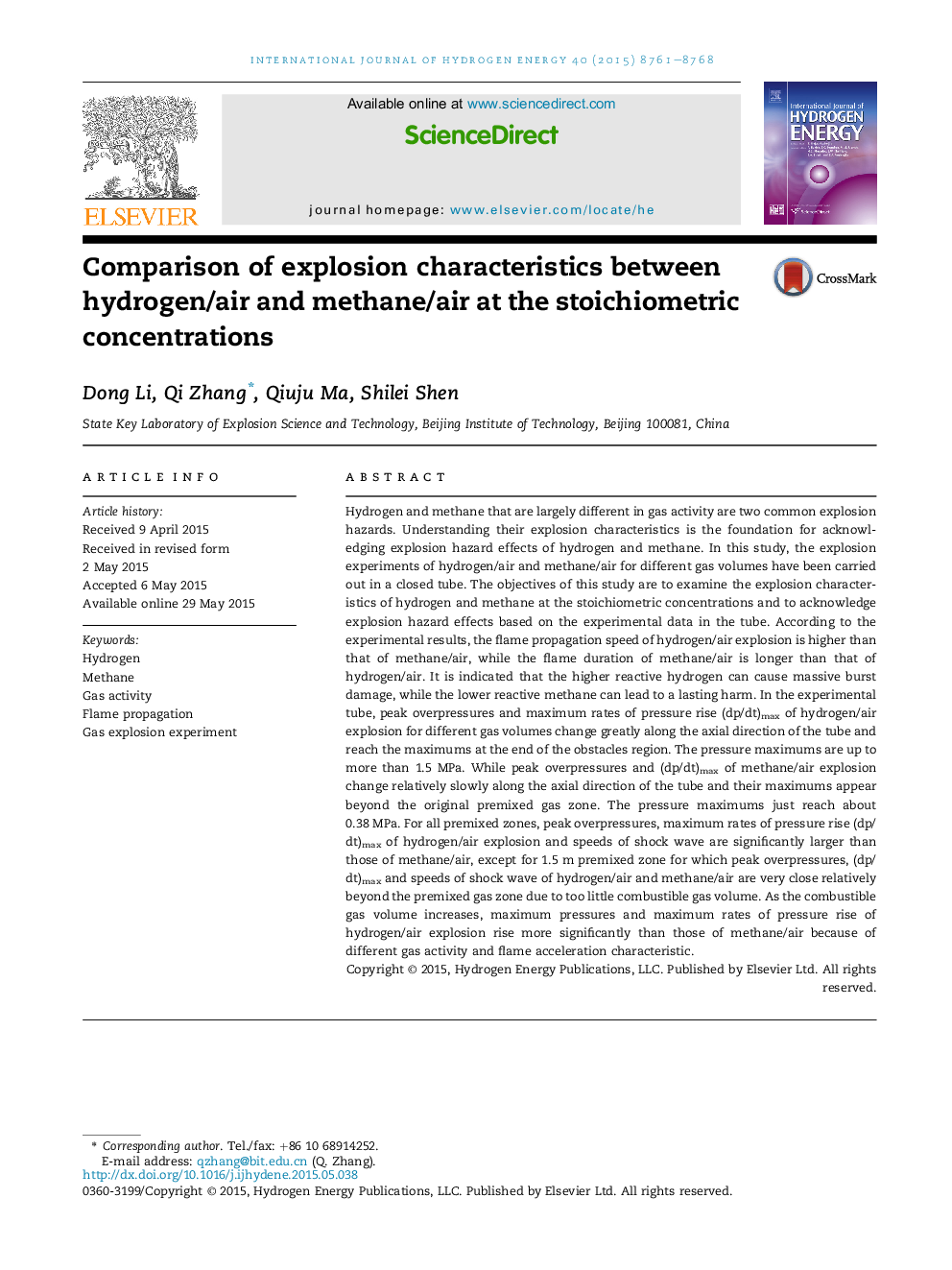| کد مقاله | کد نشریه | سال انتشار | مقاله انگلیسی | نسخه تمام متن |
|---|---|---|---|---|
| 1271330 | 1497445 | 2015 | 8 صفحه PDF | دانلود رایگان |
• Flame speed of H2/air is faster than CH4/air at stoichiometric concentrations.
• Flame duration of CH4/air is longer than H2/air at stoichiometric concentrations.
• Peak maximums and (dp/dt)max of CH4/air explosion reach peak beyond premixed zone.
• Peak maximums and (dp/dt)max of H2/air explosion reach peak at barrier's end.
• Maximum pressures and (dp/dt)max of H2/air and CH4/air rise as volume increases.
Hydrogen and methane that are largely different in gas activity are two common explosion hazards. Understanding their explosion characteristics is the foundation for acknowledging explosion hazard effects of hydrogen and methane. In this study, the explosion experiments of hydrogen/air and methane/air for different gas volumes have been carried out in a closed tube. The objectives of this study are to examine the explosion characteristics of hydrogen and methane at the stoichiometric concentrations and to acknowledge explosion hazard effects based on the experimental data in the tube. According to the experimental results, the flame propagation speed of hydrogen/air explosion is higher than that of methane/air, while the flame duration of methane/air is longer than that of hydrogen/air. It is indicated that the higher reactive hydrogen can cause massive burst damage, while the lower reactive methane can lead to a lasting harm. In the experimental tube, peak overpressures and maximum rates of pressure rise (dp/dt)max of hydrogen/air explosion for different gas volumes change greatly along the axial direction of the tube and reach the maximums at the end of the obstacles region. The pressure maximums are up to more than 1.5 MPa. While peak overpressures and (dp/dt)max of methane/air explosion change relatively slowly along the axial direction of the tube and their maximums appear beyond the original premixed gas zone. The pressure maximums just reach about 0.38 MPa. For all premixed zones, peak overpressures, maximum rates of pressure rise (dp/dt)max of hydrogen/air explosion and speeds of shock wave are significantly larger than those of methane/air, except for 1.5 m premixed zone for which peak overpressures, (dp/dt)max and speeds of shock wave of hydrogen/air and methane/air are very close relatively beyond the premixed gas zone due to too little combustible gas volume. As the combustible gas volume increases, maximum pressures and maximum rates of pressure rise of hydrogen/air explosion rise more significantly than those of methane/air because of different gas activity and flame acceleration characteristic.
Journal: International Journal of Hydrogen Energy - Volume 40, Issue 28, 27 July 2015, Pages 8761–8768
